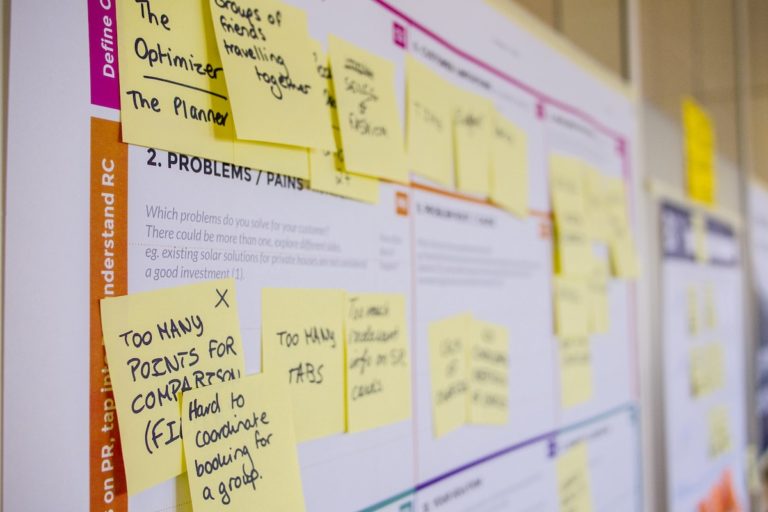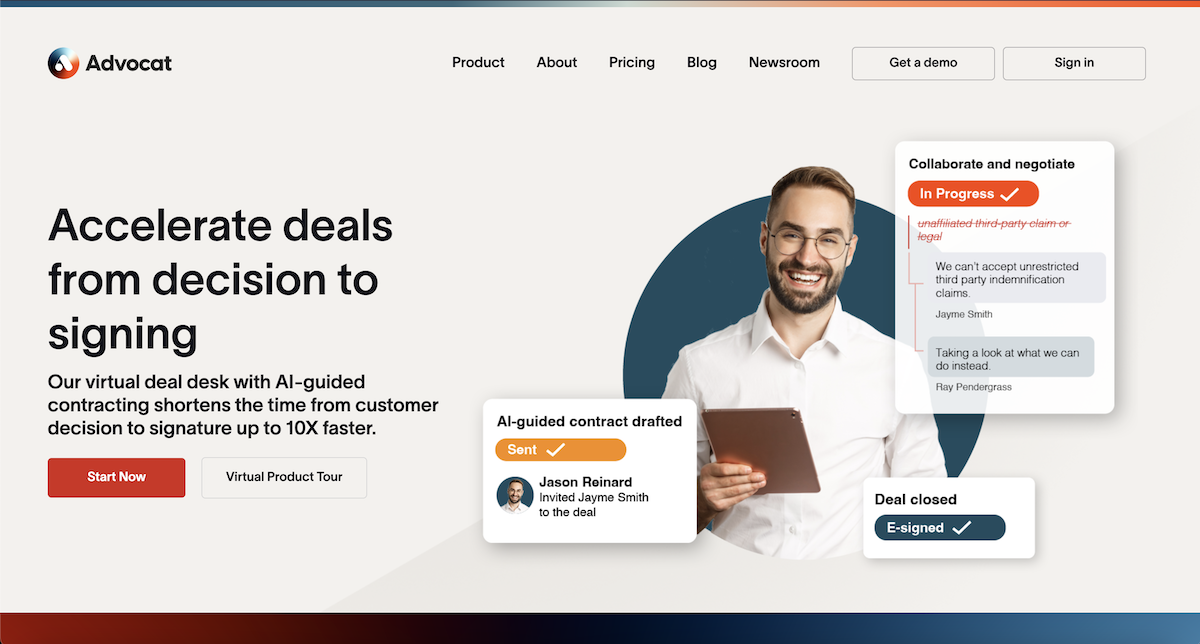This article is the first installment in the “SaaS Weekly AI Mini-Series,” where we interview AI-based SaaS founders on how they built a mission-critical product.
Introduction
The next wave of AI
Artificial Intelligence (AI) seems to be on top of everyone’s mind nowadays.
With the advancement and accessibility of machine learning models like OpenAI’s ChatGPT, we could see a lot more AI-powered products enter the market.
But as we witness this next wave of technology, we could see the downside of such proliferation. Markets will be flooded with solutions that are undifferentiated and don’t solve a core problem.
Products that may be feature-ready but not mission-critical.
As both new and seasoned B2B SaaS founders look to incorporate AI into their roadmap, it’s important they take an outcome-focused approach, rather than a solution-first approach to launching their product.
It will be tempting to blindly throw AI at a problem without understanding it first or incorporating automation where it’s not needed.
By taking an outcome-focused approach, companies can avoid trying to fit a solution to a problem and instead be nimble enough to change their approach entirely in order to achieve the results their customers truly want.
Advocat AI’s growth story
This is exactly what Advocat AI did. The company was initially conceived as an automation tool for law firms. But through an extensive customer discovery process Advocat AI narrowed its focus to contract generation and negotiation for sales teams.
By taking the time to unravel the many layers of the legal workflow, Advocat AI was able to build a differentiated product and sling-shot its growth in the legal tech market.
In fact, the company is expected to hit $1.2M in ARR by February 2023. Reaching its targeted goal in just under six months.
Key takeaways
In this article, I share the three lessons I learned from my conversation with Advocat AI’s founder.
In case you don’t have the time (no hard feelings) to read the full article, here are the quick-hit key takeaways:
- Don’t rush customer discovery, it may take multiple iterations before you find the core problem
- Involve your customers on day one, but be selective when building feature requests
- Be outcome-focused not solution-focused when building your product
But you might as well read the full article (you won’t regret it).
Let’s dive in!
Don’t rush customer discovery, it may take multiple iterations before you find the core problem

About Advocat AI
Advocat AI is a virtual deal desk that uses AI to streamline the process of generating and negotiating sales contracts. The company’s goal is to help sales teams close deals faster, reducing the time it takes to close revenue by one or two quarters.
Contract negotiation. Enterprise and mid-market technology companies. Sales teams struggling to close revenue. These are all ingredients of a very specific Ideal Customer Profile. Today, Advocat AI’s target audience is a narrow niche, but the company didn’t start out this way.
Founder background
Advocat AI was founded in 2019 by Pradnya Desh, who came from a background in law.
Pradnya previously worked as an attorney and a U.S. diplomat before starting her own law firm to work with private companies. From her seven years at the law firm, Pradnya experienced firsthand the inefficiencies and difficulties of the private sector legal system.
The challenges she faced with her clients sparked her journey to tackle the systemic problem.
What Pradnya didn’t realize was how long she would spend simply identifying what the core problem was. It would take her 12 months of customer discovery before she would officially launch Advocat AI.
Process of discovery
Pradnya initially set out to do only two months of customer discovery. Meeting her former clients and colleagues for coffee with only a PowerPoint and a list of questions.
Every week, Pradnya set out to conduct at least 10 interviews. Occasionally exceeding that number through a combination of cold outreach and referrals. At the end of each conversation, Pradnya would queue her next interview by asking for a recommendation on who else she should talk to.
It took several iteration cycles for Pradnya to arrive at the core problem. Engaging in back-and-forth rifts with customers she spoke to. Presenting her slide deck, only to hear that she had missed the mark and needed to go back to the drawing board.
But through the series of interviews, Pradnya was able to get more and more specific about what the problem was and when it occurred. She was able to segment each aspect of the workflow and double-click into the exact challenges.
Once Pradnya identified the problem, she was ready to go beyond pen and paper and build the solution.
Involve your customers on day one, but be selective when building their feature requests

Risk of building in the dark
Building in a dark room never ends well. I’ve personally made this mistake and learned it’s the quickest way to burn your cash.
Involving customers from the very beginning is essential in order to ensure that your product meets their needs and addresses their pain points. But in legal tech, companies must balance between “building fast and breaking things” and “doing no harm.”
On the one hand, you want to onboard your customers as quickly as possible to get their feedback, but on the other hand, you want to ensure you are removing risk first before adding value. When dealing with legal contracts, the smallest mistakes can be costly for companies.
For Pradnya, that meant going back to the customers she interviewed and getting their input as soon as she started building the MVP of Advocat AI. Having them guide her roadmap every step of the way.
Finding the commonalities
The benefit of conducting an extensive period of customer discovery is that Pradnya had a Rolodex of potential customers to call upon. Leveraging her interviews as a way to get early signups, but more importantly, get input into the product roadmap.
The challenge, however, was not getting distracted by the flurry of recommendations she received. Each customer Pradnya spoke with had their own five feature requests. Forcing her to sift through all of them to design her roadmap.
However, having an intimate understanding of the problem allowed Pradnya to coalesce the requirements and recommendations into a concrete path forward.
She broke down her process into four steps:
- Understand the problem
- Gather the requirements
- Consolidate them into core buckets
- Then identify the commonalities
By following this process, Pradnya combined the inputs from all conversations and avoided building for one single company; a path she knew would turn Advocat AI into a consulting company instead of a software company.
Be outcome-focused not solution-focused when building your product

Pivoting to a virtual deal desk
Immediately following the first launch of Advocat AI, the company realized there was more to flow that customers needed. Automation alone wouldn’t fix the bottlenecks in the workflow. Instead, the user experience of negotiating contracts needed to change.
Despite the company’s cutting-edge AI model (which we’ll get to in a second), the platform’s collaboration aspect was the biggest value driver for customers. By allowing sales and legal teams to see the same document at the same time, reviewing the redlines and finalizing the contracts became a lot quicker.
As a result, Advocat AI relaunched from an AI contract generation solution into a virtual deal desk. Doubling down on managing the entire sales contract workflow.
Tech differentiation
Although Advocat AI pivoted its positioning, the company’s cutting-edge AI model is still one of its main differentiators.
Keeping the outcome in mind of removing risk before adding value, Advocat AI knew the accuracy of its AI model was critical for customers. The platform’s collaborative design could speed up the contract negotiation process, but if the review of the contracts themselves weren’t accurate, then customers wouldn’t achieve the end result they desired.
This led Advocat AI to design its model differently. Compared to other legal-AI models on the market, Advocat AI uses a knowledge graph approach rather than an unstructured machine learning approach.
By training the model with this approach, the company was able to achieve a higher level of accuracy that guides customers at every stage of a contract’s lifecycle. The platform provides predictive insights before the contract is even sent to a customer or identifies potential risks during negotiation.
Today, Advocat AI’s customers are asking for more features from the company’s model. Features like the ability to predict the legal ramifications of accepting a redline or predicting the likelihood of a contract being signed.
Recap: How Advocat AI Built a $1M ARR Legal Tech Platform by Spending 12 Months On Customer Discovery
- Don’t rush customer discovery, it may take multiple iterations before you find the core problem
- Involve your customers on day one, but be selective when building feature requests
- Be outcome-focused not solution-focused when building your product
Recommended resources for SaaS founders
At the end of my interview, I asked Pradnya what resources she recommends to other SaaS founders. Here are her top picks:
Recommended books
- Do More Faster: Techstars Lessons to Accelerate Your Startup – by Brad Feld & David B. Cohen (Link)
- Venture Deals: Be Smarter Than Your Lawyer and Venture Capitalist – by Brad Feld & Jason Mendelson (Link)
- WHO – by Geoff Smart & Randy Street (Link)
- Measure What Matters by John Doerr (Link)
- Obviously Awesome by April Dunford (Link)
Looking for more SaaS growth stories?
Stay up-to-date with the latest growth stories and curated SaaS content by subscribing to SaaS Weekly. Every Friday, we send you the best articles and case studies to inform your next growth strategy.







